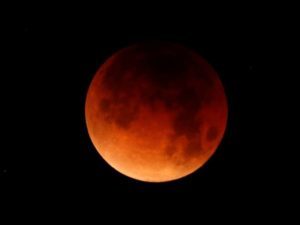
Moon Was Once Able To Support Life – But Extensive Research Is Required To Know Details
According to a new study, the Earth’s natural satellite, the moon could have twice supported life in its history.

As per the research the satellite had liquid water, an atmosphere and a magnetic field and could even have had organic material about 4 billion and 3.5 billion years ago.
All these conditions may have been there for at least tens of millions of years – a good amount of time for life to emerge.

We need a close examination of the lunar surface to search for any signs of past life on the satellite.
The stressing need is that we take up a long travel from our home planet to find a suitable spot in our solar system that could have once supported life.
The journal Astrobiology wrote, long ago Earth’s moon may have had all those conditions suitable for life to rise.
If seen from fact point of view, such conditions could have arisen on the moon during two different periods basically, each of them longing up to tens of millions of years long, the study suggests. The authors are not claiming that life ever existed on the natural satellite but the conditions that make life possible seem to have been in place for billions of years ago.
In the same way, on other planets and their moons too, clues that support the idea that a climate supportive to life including liquid water, an atmosphere that would help keep water stable on the surface, a magnetic field offering protection from solar and cosmic radiation, and organic compounds that could make up life’s building blocks may exist.
According to the authors’ studies claim that at least some of those important life-supporting conditions could have existed simultaneously on the moon.
“If liquid water and a significant atmosphere were present on the early moon for long periods of time, we think the lunar surface would have been at least transiently habitable,” Dirk Schulze-Makuch, a Washington State University astrobiologist and co-author of the study, .
But it never happened that astronauts and rovers ever found any such evidence of life on the moon, and even if organic material did ever exist on our planet’s satellite, we don’t know if any of their traces remain.
The idea of life existed on the natural satellite is based on a series of discoveries made within the past decade, that clearly point out that the moon is not as dry as we had assumed it to be. Still, there’s probably water ice in polar craters and in the interior of the moon.
There could have been good amounts of water in liquid form on the surface billions of years ago, the new study says.
To understand the reason behind this, a bit of lunar history is needed. Long ago when our solar system settled into its current layout – about more than 4.5 billion years ago – a proto-Earth and another planetary body likely collided and were vaporized as a result.
The moon emerged, according to the theory, only after the super-heated doughnut of molten, vaporized rock and liquid – called a synestia – cooled. After all this process the remaining cloud of vapor condensed to form the Earth. The moon was largely molten in its form for a long time after its formation, with an ocean of magma spewing gases into its sky.
Those spewing gases could have been enough to create a good atmosphere. As soon as the molten ocean ended up solidifying (around 4 billion years ago), there could also have been pools of liquid water over the moon’s surface. The same time period, the new study suggests, was the first time conditions on the moon could have supported life.
You May Also Read: Swiss Banks Deposits From India Fell By 80% Since 2014: Finance Minister Claims